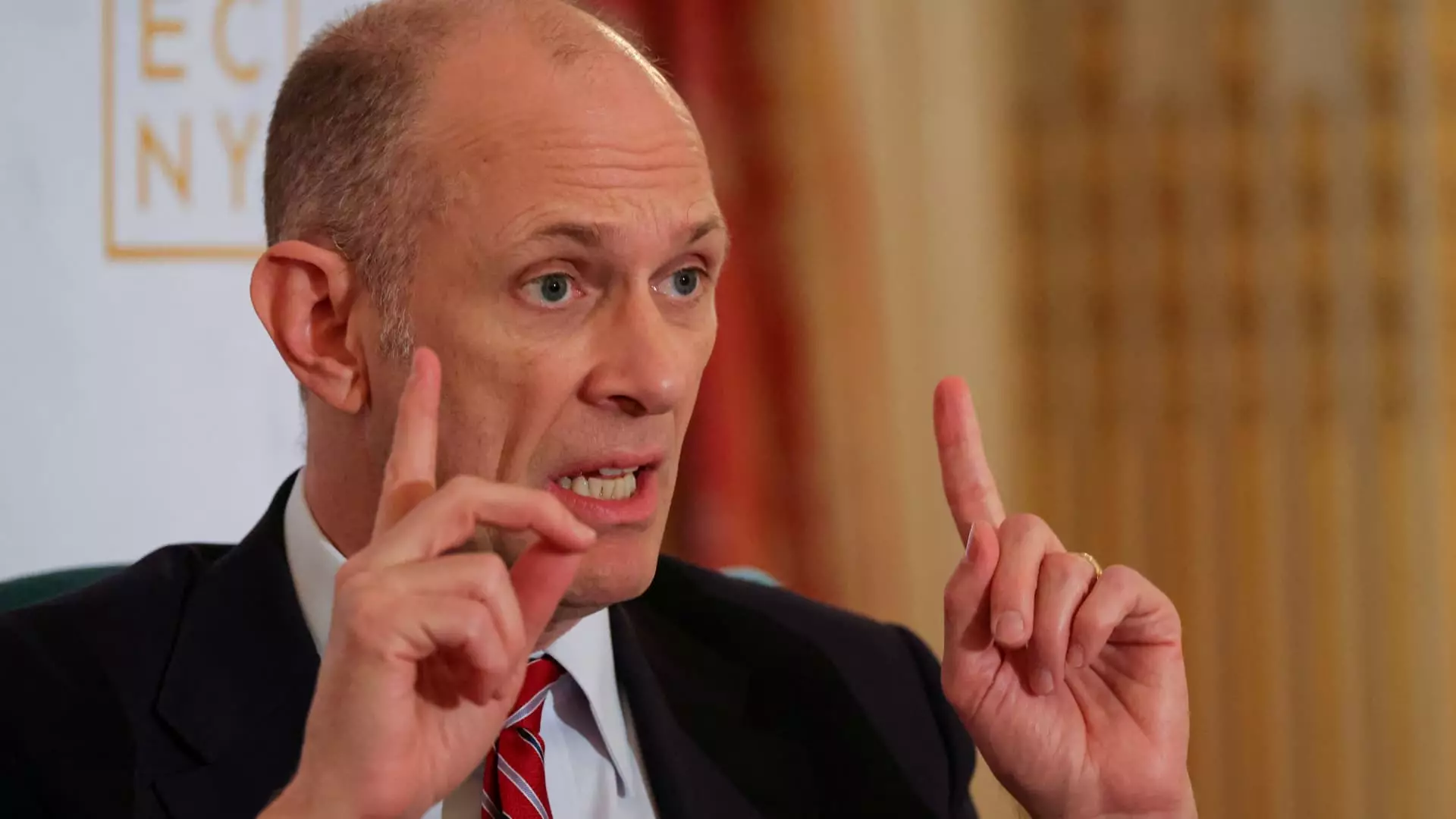The recent comments by Austan Goolsbee, the President of the Chicago Federal Reserve, shed light on the precarious position of the U.S. economy amid Donald Trump’s latest tariff threats. This is a reflection not only of the turbulence in Washington but also of the broader implications these actions hold for American consumers and businesses alike. Tariffs are not merely financial instruments; they are blunt tools that can reverberate through economic corridors, influencing everything from employment to inflation. Goolsbee’s caution suggests that the Federal Reserve, while aiming for economic stability, finds itself navigating a minefield of conflicting priorities and unpredictability spurred by impulsive political decisions.
As Goolsbee articulated during a CNBC interview, the intention is to maintain a path toward lower interest rates, yet the constant barrage of tariff threats complicates that vision. A speculative remark about maintaining a stable course amidst such chaos serves as a reminder of how precarious our economic environment has become. The Fed must now reevaluate its strategies every time a new tweet emerges from the Oval Office. This underscores a shift in the landscape where economic decisions are too often overshadowed by political whims.
The Illusion of Strength: Tariffs and Stagflation
Goolsbee’s mention of “stagflation,” a toxic mixture of stagnant growth and inflation, highlights the potential ramifications of the Trump administration’s tariff policies. For many Americans, the perception of economic recovery clouds the underlying issues. The echo of Trump’s calls for 50% tariffs on European Union goods, while targeting giant corporations like Apple, reflects a misguided belief that such actions can somehow bolster American manufacturing. However, in reality, this heavy-handed approach could lead to an economic vortex where prices rise, but growth does not follow suit.
This misguided economic nationalist approach is dangerously naive and risks creating a chasm where the working class feels the brunt of these new taxes while corporate profits are offset through price increases. The working class may not get a paycheck boost simply because tariffs raise the cost of imported goods. Ironically, the very middle-class consumers the policies aim to protect could end up marginalized. The opportunity for an economic renaissance could instead devolve into an era marked by uncertainty, with real consequences for the average American family.
The Market’s Unease and the Fed’s Dilemma
In times of such uncertainty, the markets react swiftly, reflecting the anxieties held by investors concerning fiscal policy. The volatility of trade negotiations is akin to a game of musical chairs—a single misstep can leave many unprepared for the next economic downturn. Goolsbee’s reluctance to signal a commitment to future rate changes due to evolving tariff policies illustrates the paradox of central bank independence. The Fed, ideally a stabilizing force in the economy, may find itself responding more to political machinations than to fundamental economic indicators.
The nuances of trade tensions require the Fed to strike a delicate balance. Should the central bank cede to political pressures or stay the course based on empirical economic health indicators? Goolsbee’s tempered optimism about achieving a stable economy suggests faith in the resilience of market fundamentals, yet this optimism only goes so far when the unpredictability of trade policy is at play. How can one confidently predict a stable economic future when today’s market dynamics are dictated by tomorrow’s tweet?
The Importance of Clarity in Economic Policy
Ultimately, the path forward hinges on political clarity and consistency—qualities that seem increasingly rare in today’s governance environment. Goolsbee aptly notes the necessity for “clarity” before the Fed can make informed decisions about interest rates and economic direction. As the ongoing trade war casts a shadow over economic forecasts, clarity becomes an urgent necessity for stability, not only for financial markets but also for ordinary citizens seeking guidance in confusing times.
The repercussions of Trump’s tariffs extend beyond mere numbers on spreadsheets; they signal how deeply intertwined politics and economics have become. It’s this lingering uncertainty that fosters a general sense of unease among consumers, potentially stalling the very growth that all parties purportedly seek. The dangers of politicizing economic policy have never been clearer, and as we plunge deeper into these murky waters, it becomes increasingly evident that without a more rational approach to trade, the U.S. economy risks severe repercussions in the long run.

Leave a Reply